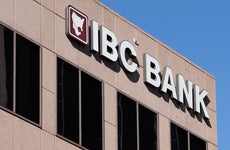What are Native American-owned banks and how to support them?

The Bankrate promise
At Bankrate we strive to help you make smarter financial decisions. While we adhere to strict , this post may contain references to products from our partners. Here's an explanation for .
Native American-owned banks and credit unions are a type of minority depository institution (MDI), aiming to serve historically marginalized communities and help equip Native American individuals with financial self-sufficiency.
Like other types of MDIs, Native American-owned financial institutions are federally recognized as such and receive technical and management assistance from the government. They are defined as financial institutions that are either majority-owned by Native Americans or have a board of directors that is majority Native American, and they predominantly serve Native American communities.
According to the U.S. Census Bureau, 1.3 percent of the population (or slightly more than 4 million people) are Native American or Alaskan Native. The latest available data from the Federal Deposit Insurance Corp. (FDIC) shows that Native Americans are the most likely to be unbanked — having no bank account — of all racial groups in the U.S. 16.3 percent of Native Americans were unbanked, compared with 13.8 percent for Black individuals and 2.5 percent for white individuals.
Native American-owned banks and credit unions are crucial for reducing the number of unbanked Native Americans, since many primarily serve Native American communities. Here is what you should know about the history and current state of Native American-owned financial institutions in the U.S.
What is a Native American-owned bank or credit union?
Native American-owned banks and credit unions are federally designated as such by the FDIC — the federal agency that insures deposits and oversees financial institutions across the U.S. While banks are for-profit financial institutions, credit unions distribute profits among their members. Both usually offer a variety of financial services, including credit and savings and checking accounts.
Minority Depository Institutions (MDIs)
Native American-owned financial institutions are a type of MDI. MDIs are federally designated by the Financial Institutions Reform, Recovery, and Enforcement Act of 1989, which aimed to do the following:
- Preserve the number of financial institutions with minority ownership.
- Preserve the minority character of these institutions in the case of mergers or acquisitions.
- Provide technical assistance, training and education programs.
- Promote the opening of new MDIs.
The Act continues to protect and promote institutions that are qualified as MDIs today. To qualify, the financial institution must have one of the following:
- At least 51 percent of the voting stock is owned by minority individuals (Black, Native American, Hispanic American or Asian American individuals), or
- A majority of the Board of Directors are minority individuals and the institution predominantly serves minority communities.
Being classified as MDIs helps Native American-owned banks and credit unions overcome some of the disadvantages that have historically sidelined their communities by granting them extra protections.
Comparison with the largest U.S. banks
There’s a clear difference in asset size between Native American-owned banks and U.S. banks that are not minority-owned.
The four largest U.S. banks each have over $1 trillion in assets. Only one Native American-owned bank, Gateway First Bank, has over $1 billion in assets, which amounts to less than 0.06 percent of the total assets of JPMorgan Chase, the largest U.S. bank.
Native American-owned banks and credit unions
History of Native American-owned banks and credit unions
Native American communities have historically been denied opportunities for economic advancement and lending.
Indian Country — the term used by Native American officials to describe the land occupied by hundreds of tribal nations — exists under tribal laws, and state laws do not apply. As former Federal Reserve Board governor Mark W. Olson pointed out, the difference in and complexity of legal systems often meant that the private financial sector was unwilling to invest in Native American communities.
A significant issue faced by Native Americans historically and today is the lack of financial institutions in Indian Country. Many Native American communities face banking deserts, which are areas with little or no access to financial services. The Native Nations Institute found that only 14 percent of communities living on tribal lands have a financial institution in the community, and only half of these communities have a financial institution within a 30 mile radius. 6 percent of those living in Indian Country have to travel over 100 miles to reach a bank or ATM.
The establishment of Native American-owned banks and credit unions has aimed to combat the lack of financial investment in Native American communities and secure greater access to financial institutions where there might otherwise be none. One of the first Native American-owned banks to open was the Bank of Cherokee County in 1907. It was founded by prominent members of the Cherokee Nation to focus on community reinvestment and continues to support Native Americans today, investing 95 percent of its deposits into the Cherokee community.
Native American Bank, based in Denver, Colorado is the only bank owned by multiple tribes and nationally focused. Founded in 2001, it was the product of 20 tribal nations coming together to create a unified Native American-owned national bank. The collaboration between numerous tribes allows the bank to pool resources to provide affordable and flexible financial services to their communities.
Native American-owned financial institutions by year
How you can support Native American-owned banks
While most Native American-owned banks primarily serve Native American communities, they are not exclusive to Native American customers. Anyone can support Native American-owned banks by opening an account with one. More deposits for the bank means it can expand its capital and capacity to invest in Native American-led projects.
Another way to support Native American banking is by sharing and contributing to community development initiatives. Some of these include:
- First Nations Development Institute: a nonprofit organization that provides financial grants to Native American-led institutions and publishes research on economic inequalities faced by Native Americans.
- National Congress of American Indians: a membership-driven advocacy group that works closely with the U.S. Department of Treasury on legislation directly impacting financing options in Native American communities. Membership is open to Native Americans and non-Native Americans who pay annual dues.
- Oklahoma Native Assets Coalition: a national nonprofit that funds and promotes asset-building and economic development in Native American communities, such as children’s savings account programs. There are tiered membership categories, including free and paid memberships.
Key statistics
- There are 20 Native American-owned banks in the U.S.
- There are 45 minority-owned credit unions with at least partial Native American ownership.
- The state with the most Native American-owned banks is Oklahoma, with 10 in total.
- The largest Native American-owned bank by assets is Gateway First Bank in Jenks, Oklahoma, with nearly $1.9 billion in assets.
- Municipal Credit Union in New York is the largest credit union categorized as Native American-owned. It is low-income designated, meaning that a majority of its membership is considered low income.
- Of the 144 banks designated as MDIs, Native American-owned banks make up 13.8 percent.
- Many Native Americans live in financial deserts — areas with no nearby financial institutions. A 2017 report by the Native Nations Institute found that the average distance from the center of a tribe’s reservation to the nearest bank is 12.2 miles, and the average distance to the nearest ATM is 6.93 miles.
- For communities that live on tribal land (land within a reservation or a trust), only 14 percent have a financial institution within the community.
- Over 10 percent of Native American individuals who wanted to apply for credit but didn’t reported concerns of being turned down as the main reason for not applying. Meanwhile, 4.9 percent of white individuals reported the same concern.
Sources: FDIC, NCUA and Native Nations Institute
Why consider banking with a Native American-owned bank?
One way Native American-owned banks help their communities is by lending and investing in areas where other banks might not. But they need deposits to fund lending opportunities. By opening an account with a Native American-owned bank, customers can help expand the bank’s capital and ability to offer essential financial services.
Many Native American-owned banks offer products for both consumers and businesses. Native American Bank, for example, has a personal checking account and two types of business checking accounts, and all of its accounts are federally backed by the FDIC.
How to switch banks or credit unions
If you’re considering opening a new account with a Native American-owned bank or credit union, first decide what type of account you’re opening. You may want to switch both a checking and savings account from your current bank to the new one, or keep one and switch the other.
Shop around for an account that fits your needs. Many Native American-owned banks and credit unions are community-focused and have local branches. However, they may offer online accounts that can be accessed nationwide. You’ll also want to consider account fees, interest rates and minimum balance requirements.
Once you’ve settled on an account, follow these steps to switch to the new bank or credit union:
- Create a list of transactions on your current account over the course of a month, making sure to note automatic transfers and direct deposits.
- Open the new account. Remember to have personal identification documents prepared and funds to meet any minimum balance requirements.
- Redirect the automatic transactions you tracked before to the new account.
- Close the old account. You may want to wait for an additional statement cycle before closing the account, to ensure that you haven’t missed any automatic payments.
Frequently asked questions
-
FirstBank and AllNations Bank are the two oldest Native American-owned banks that still exist. Both were founded in 1901.
-
The biggest Native American-owned bank is Gateway First Bank, with nearly $1.9 billion in assets.
-
There are 20 Native American-owned banks and 45 credit unions that are at least partially Native American-owned, as reported by the FDIC and NCUA in June 2022.
-
While many tribal lands still have little or no access to financial institutions, there are some that exist within reservations or trusts to support Native American communities. Turtle Mountain State Bank, for example, was one of the first banks to open in a federally recognized reservation.
-
Generally, bank accounts are available to anyone who would like to open one. The bank may have only one or two local branches, but it may still offer easily accessible online banking services.Credit unions often have specific membership requirements and may not be open to everyone.
Bottom line
Native American-owned banks are an essential resource for Native American communities, especially given the lack of financial services in tribal lands and the significant portion of Native Americans who are unbanked.
Many Native American-owned financial institutions offer lending services to historically underserved areas and invest in the economic development of Native American communities. To support and preserve these institutions, consider opening an account with one or donating to an advocacy group.
Related Articles



What are Hispanic American-owned banks and how can you support them?
